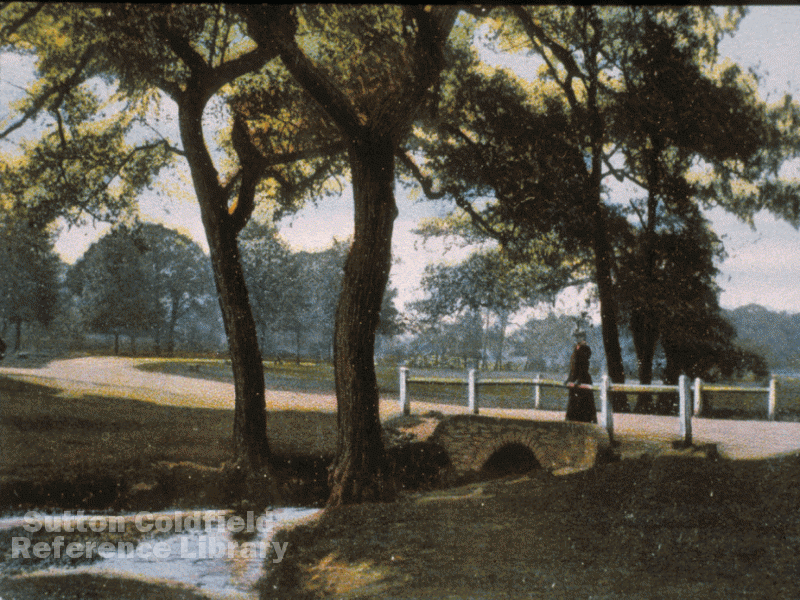Park Road was made in 1826, leading to Sutton Park via Town Gate and Meadow Platt - before 1826 Meadow Platt had been farmland. This new road was said to be a great boon, previously the only access to the park was along Lichfield Road and Blackroot Road to Hartopp Gate (formerly known as Lea Gate).
However, the road ended at Town Gate, and access towards Wyndley was blocked by farmland even if you could get across the stream. At the time Park House was a thriving mill known as the Blade Mill, with deafening tilt hammers and grindstones; the miller, George Brown, was also a farmer of over 100 acres rented from various owners. To get from Town Gate to Wyndley you would have to go through the mill yard or round George Brown’s private grounds and via Keepers Pool dam.
Brown rented the two fields which lay between Town Gate and Wyndley from the Warden and Society (Sutton Corporation), so it seemed a simple matter for the Warden improve the Park by throwing the fields open and adding the land to the Park. But George Brown would not give up his lease so easily, and negotiations dragged on for over a year before a solution was agreed.
On September fifth 1828 the Warden and Society resolved to build a road four hundred yards long across the two fields which were to be thrown into the park, the cost “not to exceed £60 to be paid in equal parts between the Corporation and Mr. Hartopp”. However, the Corporation was still trying to get George Brown’s landlord at the Blade Mill, Mr. Scott, to foot the bill. It was not until the following May that agreement was reached with Mr. Scott, who received part of one of the fields to add to the blade mill grounds in exchange for allowing the plans to go ahead.
Sir Edmund Hartopp shared the cost of the bridge over the stream with its brick arch and four-foot span, and the park was opened up to the flow of trippers which steadily increased as the century progressed.
